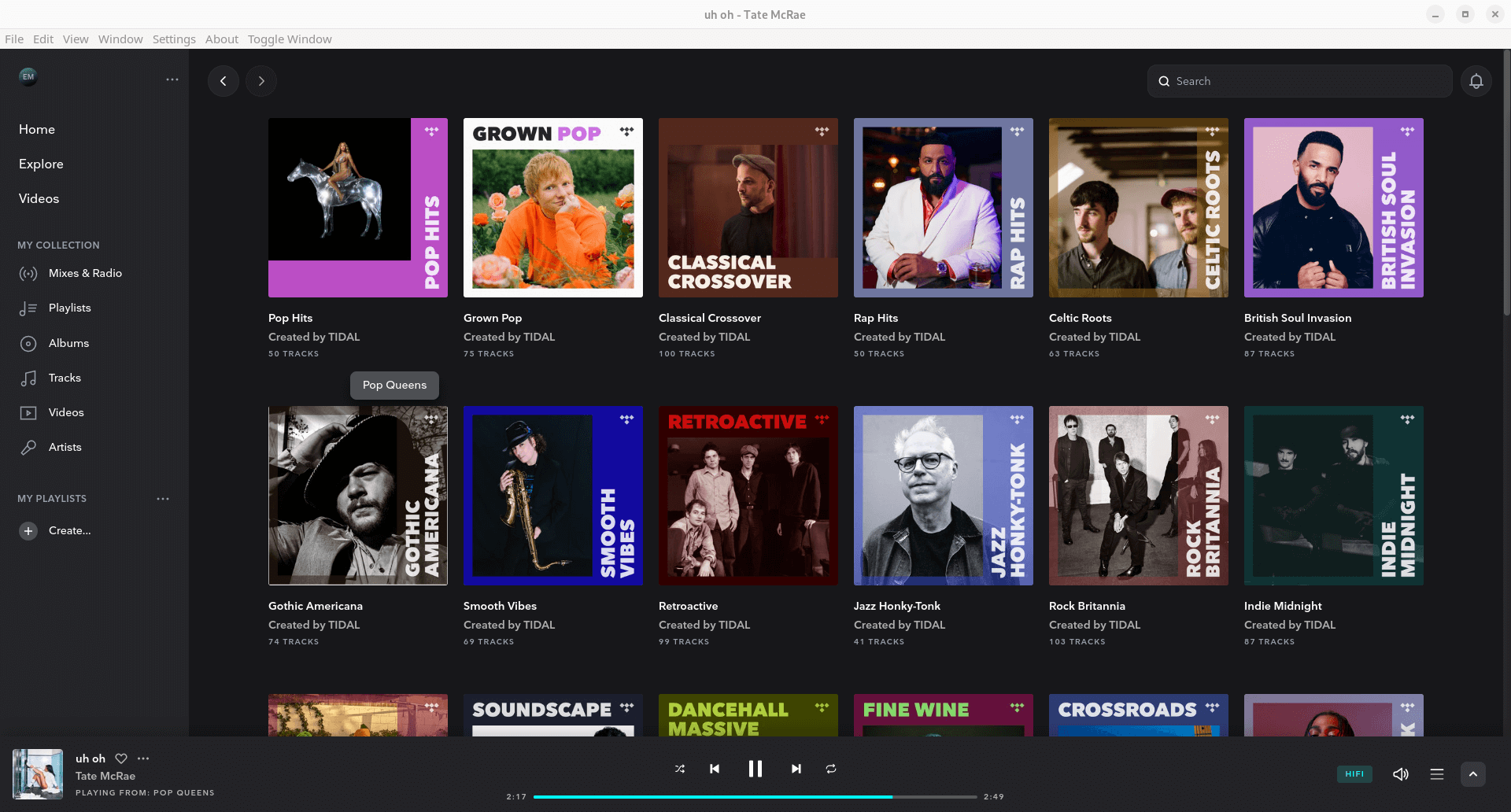TIDAL is a global music streaming platform with a song catalogue stretching to over 90 million songs and nearly half a million videos. It was the first streaming service to offer hi-res audio thanks to its adoption of MQA technology. Its competition has caught up in the hi-res player stakes with Amazon Music HD, Apple Music and Qobuz also offering better-than-CD streams – and at a cheaper price point.
There are Windows and Mac desktop apps, web player and Android and iOS mobile apps. There’s no official or even semi-official client for Linux from TIDAL. Instead, the only choices are to use the web player or install TIDAL Hi-Fi. We looked at the web player in this article. Let’s turn to TIDAL Hi-Fi.
TIDAL Hi-Fi is a third-party music streaming program. It uses Castlabs’ version of Electron for widevine support. It’s free and open source software. You’ll need a subscription to TIDAL to use the software.
It will no doubt cause confusion that the software is named TIDAL Hi-Fi given that the TIDAL service has a HiFi plan. Let’s be very clear, TIDAL Hi-Fi has no affiliation with TIDAL. The latest version appears to be renamed to Tidal-Hifi although it’s still showing as TIDAL Hi-Fi in the program. Even with this renaming, things really aren’t any clearer.
Installation
Because of time limitations, the software was tested mostly with the flatpak in Arch. We prefer compiling software and we’ll probably revisit this at a later date.
The developer provides packages for Debian/Ubuntu, Fedora, Arch, as well as cross-platform AppImage and snap packages. It’s heartwarming to see a package for FreeBSD too. The unfettered source code is available if you fancy the manual installation approach.
There are also binaries available for macOS and Windows.
In Operation
Here’s an image of TIDAL Hi-Fi in action. We’re showing the software with its menu bar, but it’s easy to turn this off which improves aesthetics.

The software supports notifications when a new song begins, with the option to mute specific artists.
There are custom hotkeys, and an API for status and playback. In case you didn’t know, TIDAL has a builtin web API to provide current song information. TIDAL Hi-Fi supports that API as well as playback control from that API.
There are custom integrations for MPRIS and Discord, as well as tray support.
Summary
TIDAL Hi-Fi is the best alternative to TIDAL’s web player for Linux users. The interface is reasonably polished, it’s stable in operation, offers integrations including Discord and includes tidal:// protocol support.
But it’s very disappointing there’s no gapless playback support. The developer is aware of this issue but feels that it’s a difficult issue for a third-party client to solve when the actual streaming service lacks that functionality. But we’ve observed third party software on other streaming services support gapless playback even when the streaming service doesn’t. For example, our Streaming with Linux: Deezer notes the third party Deezer Enhanced offers gapless playback when the web-based Deezer doesn’t.
As it’s Electron-based, we didn’t expect TIDAL Hi-Fi to be frugal with system resources. The wonderful ps_mem utility reports memory usage is around 470MB. That’s a hefty footprint for a music program. The software also uses more than we’d want in terms of CPU cycles. Moving part of the rendering to the GPU doesn’t really solve the issue.
Website: github.com/Mastermindzh/tidal-hifi
Support:
Developer: Rick van Lieshout
License: MIT License

When I first tried the program I thought wow there are typos in the user interface, really bad for a company like TIDAL to miss them. Then I realised that the program is not written by TIDAL. Lol